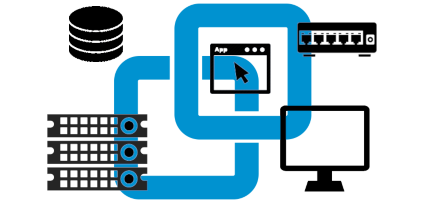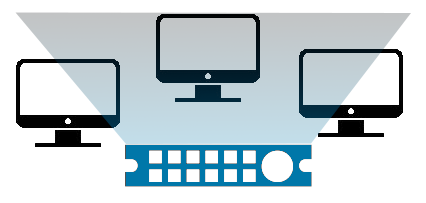OS Virtualisation
motivations
hosted vs native
solutions
Application virtualisation
principle and motivations
creation of a portable app
streaming
Editors and solutions
Network virtualisation
external (VLAN)
internal
overlays
Desktop virtualisation
remote desktop
thin client
VDI
Storage virtualisation
blocks / files / objects
host / device / network
Environment virtualisation: containers
Docker
Cloud computing
OS virtualisation
more services
Project management
TCO
methodology

technologies
motivations
hosted vs native
full vs para-virtualisation vs hardware assisted
Cloud computing
solutions
Virtualisation and Cloud timeline
VMware timeline
Xen Qube OS
Microsoft Hyper-V
QEMU
Review
VirtualBox
VM creation
VM networking
VM management
management
migrations
monitoring and analysis
backup
demo on VMware lab
in practice
proxmox installation
proxmox storage
proxmox create VM
proxmox cluster and VM migration
proxmox importing a VirtualBox VM
proxmox Backup Server
Proxmox storage on TrueNAS over iSCSI
ESXI + vCenter
Hyper-V cluster with shared storage over iSCSI

Introduction
containers vs virtual machine
historical background Interactive
Docker client-server architecture and terminology Interactive
examples of a container-based application
Installation
plans and editions
Linux Debian
Windows
verify your installation
help
Images
presentation of Docker Hub
download
characteristics
remove
exercise
Container creation
objectives of this section
run, list
start, stop, inspect
networking
access the shell, copy files
persistent storage
exercise
Container automation
objectives of this section
Dockerfile: example 1
Dockerfile: example 2
Dockerfile: commands and best practice
multi-service container using supervisor [optional]
exercise
Multi-container application
objective of this
section
docker compose: YAML file structure
docker compose: example: haproxy, glpi, mariadb
docker compose: commands and best practice
exercise
Docker management
creating an image from a
container (commit)
start a container at boot
logs and troubleshooting
resources monitoring
publishing to a repository
backup
graphical interfaces
notions of orchestration

